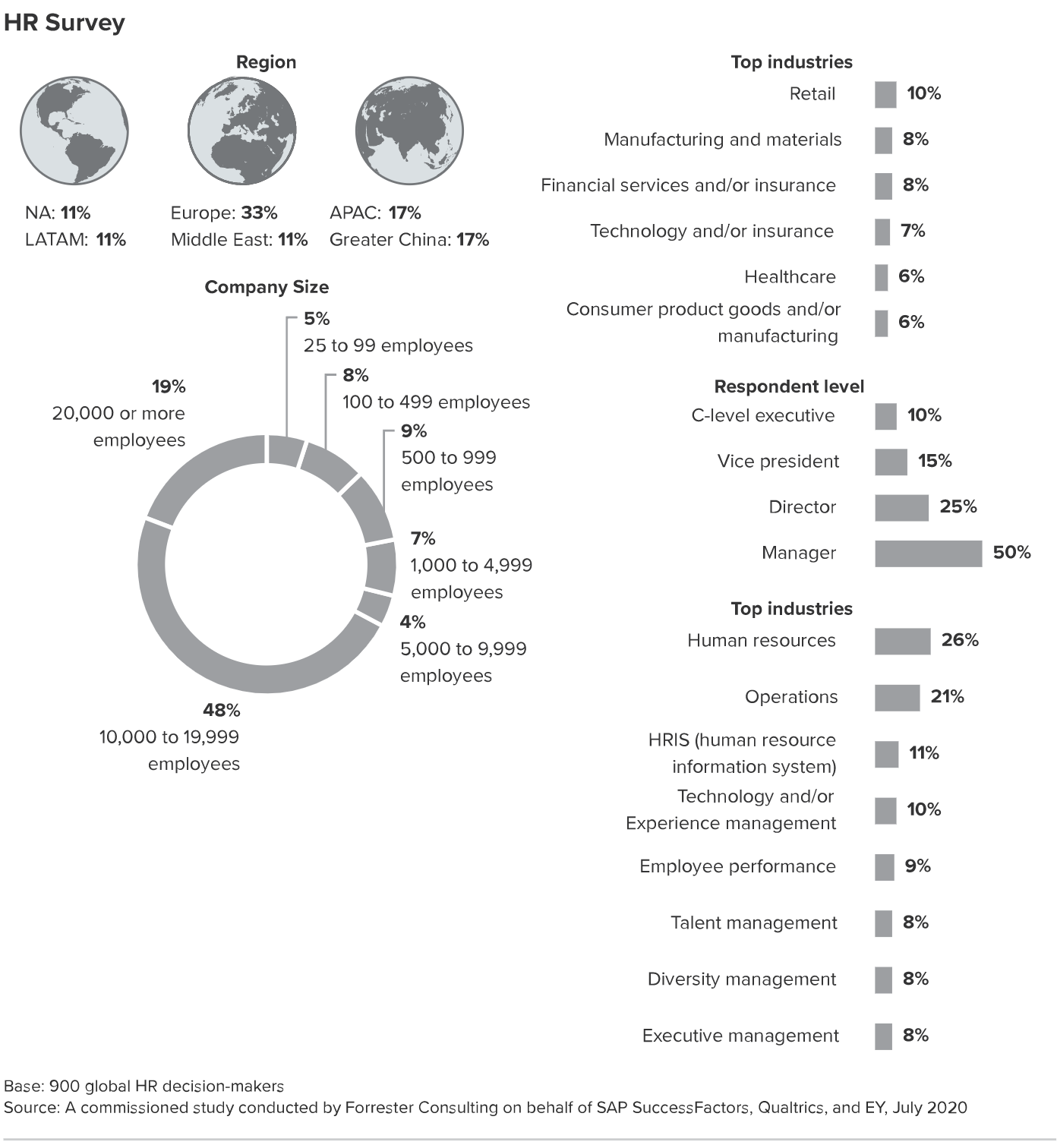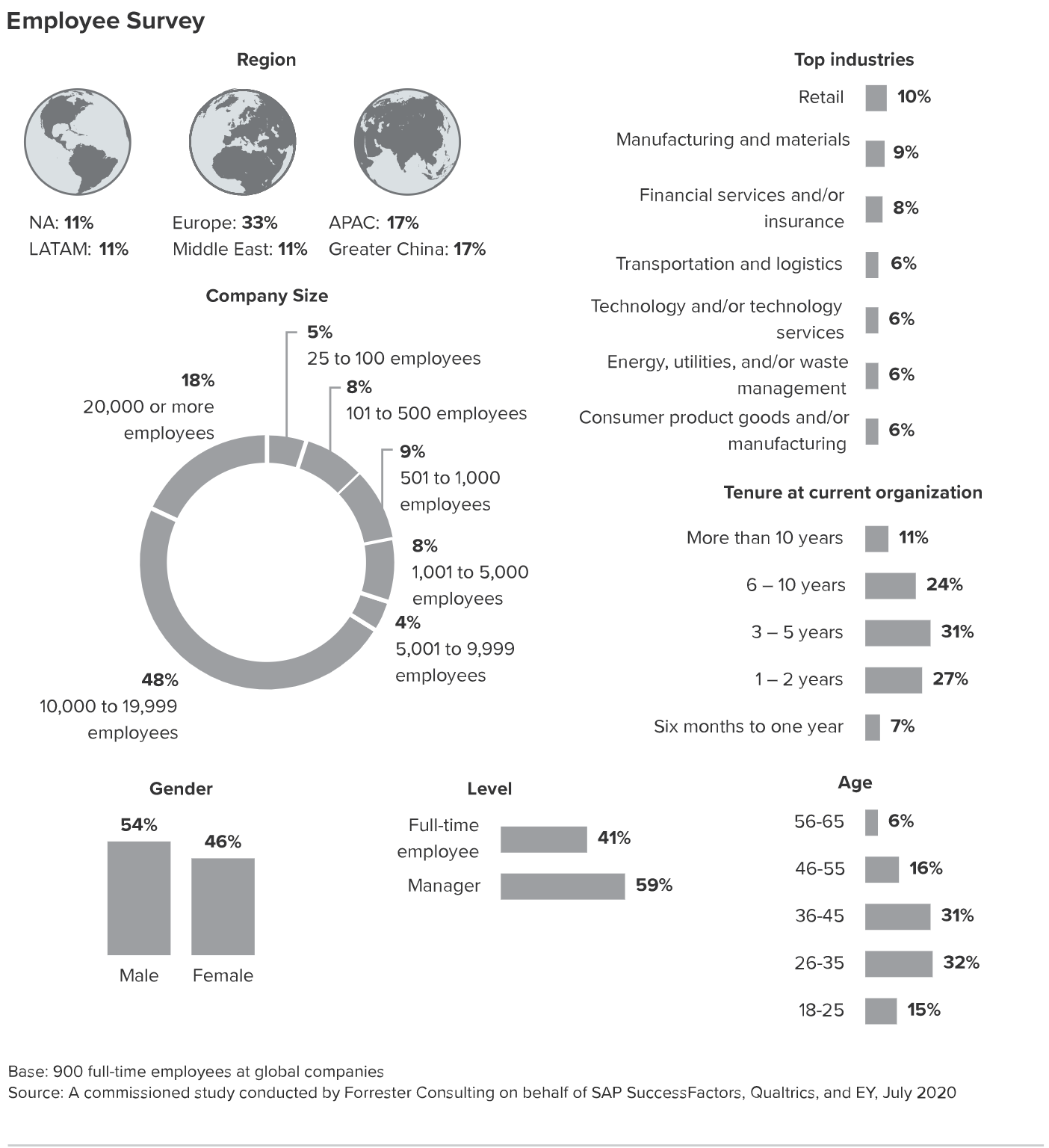Forrester’s Employee Experience (EX) Index shows that an engaged workforce is an important driver of business success. These engaged employees work harder to barriers, better serve their customers, and stay with the company longer. 1 But organizations which fail to properly listen to, understand, and act on behalf of their employees’ risk potential negative impacts such as increased employee churn, poor customer experience (CX), reputational brand damage, and alienating investors at great cost.
SAP SuccessFactors, Qualtrics, and EY commissioned Forrester Consulting to evaluate the connection between good EX and long-term business value. Forrester conducted two global surveys — one with HR decision-makers and one with full-time employees — to explore this topic.
Contributing Research: Forrester’s CIO research group
Key Findings
-
EX is critically important, but praxis remains relatively immature.
EX is now more important than ever before, as its influence impacts both HR strategies and organizations’ ability to accomplish major business goals. But despite this, EX strategies and initiatives still suffer from organizational silos, the lack of executive support, piecemeal measurement, inconsistent feedback mechanisms, and insufficient tooling, which all combine to produce an incomplete view of the employee journey.
-
HR departments and full-time employees are fundamentally misaligned, and it’s causing major problems.
When it comes to the drivers of EX, HR decision-makers and full-time employees do not see eye to eye. When HR teams fail to understand the levers that make the most difference to employees, dissatisfaction naturally follows. And for this reason, full-time employees are more skeptical than HR decision-makers about EX improvement. This points to the continually existing gap in EX across organizations globally.
-
Good enough isn’t going to cut it anymore.
The COVID-19 pandemic has put a spotlight on what many have been noticing for some time: changing workforce conditions make EX more important than ever. As more employees become remote workers, flexibility and technology options become more important. Similarly, work-life balance takes on greater importance as workers attempt to manage the new responsibilities of remote learning for their children and/or caregiving for ailing relatives. Unfortunately, HR teams are not prepared for this new era: Fewer than 10% of HR leaders say employee needs are their number one priority when setting EX strategy. This spells trouble for future EX success.
-
When done well, EX can be transformative for business success.
Both HR leaders and employees agree that good EX results in positive employee outcomes. Satisfied employees produce higher quality work, are more agile and productive, and are more likely to both stay at their current organization and recommend others for open positions. Engaged employees, in turn, are good for the business. EX leaders tend to see higher returns on their EX investments, while also enjoying increased revenue, better customer experiences, and a stronger, more competitive brand.





